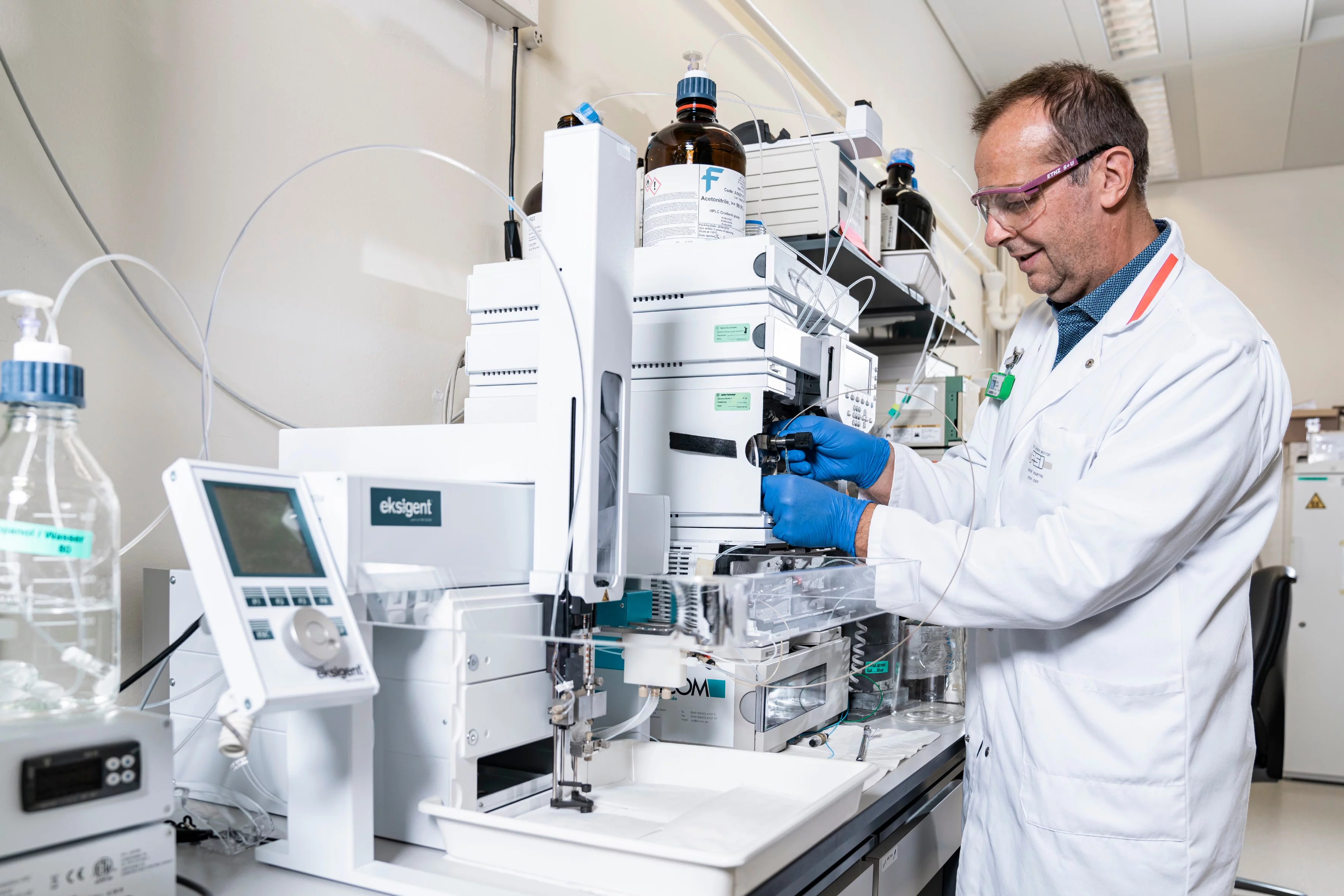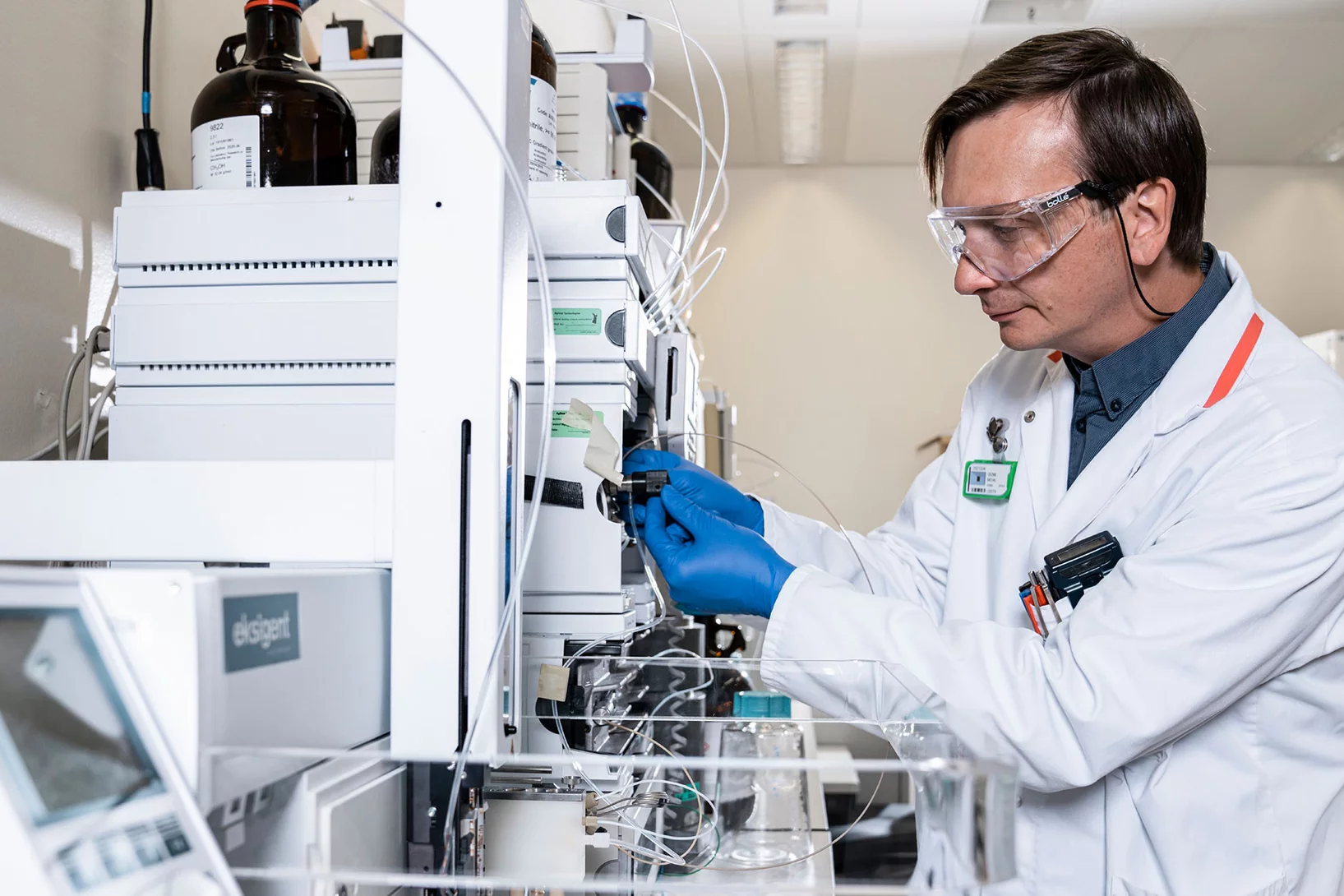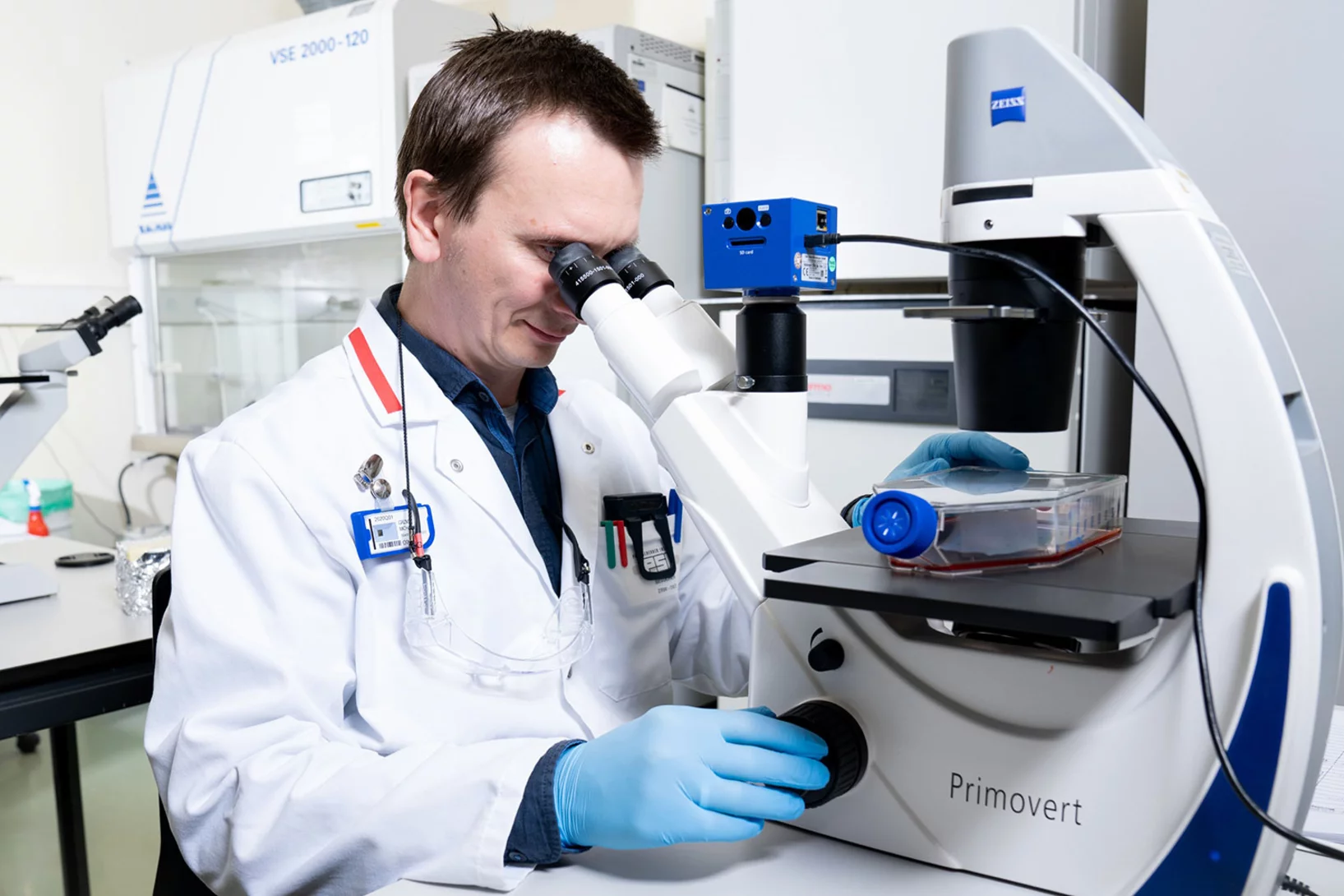Researchers at the Paul Scherrer Institute PSI, in collaboration with ETH Zurich, have optimised a method for tumour diagnosis using radionuclides. Potential side-effects can now be significantly reduced through a molecular trick. The researchers report their results in the current issue of the scientific journal Bioorganic & Medicinal Chemistry.
With the development of a new class of so-called radiopharmaceuticals, the researchers have been able to address the problem of radioactive substances remaining in the kidneys for a long time. Their approach relies on an additional protein that can be split apart in the kidneys. This cleavage detaches the radioactive substance from the drug, allowing it to go directly into the urinary tract so it can be excreted.
Radiopharmaceuticals are medicines, administered by injection, that can be used to detect and attack tumours in the body. In principle, these substances consist of a radionuclide and a biomolecule. The biomolecule, for example an antibody or a peptide, docks specifically on certain surface structures of tissues. The radionuclide emits radiation, which can be used to detect a tumour or to destroy it.
The principle sounds simple, but there are many hurdles to overcome on the way to a medicine that's ready for use. Aside from the purely practical difficulty of coupling a radionuclide to a biomolecule, it is essential and challenging to find the right molecule in the first place. Martin Béhé, head of the Pharmacology Group in the Centre for Radiopharmaceutical Sciences at PSI, explains the problem: “If the molecule is too specific, there is a danger that not all tumours will be detected. However, if it is too general, it could possibly bind to healthy tissue, leading to false positive diagnoses.”
Targeting the extracellular matrix
For suitable molecules, however, there are other possible targets besides the surfaces of tumours, for example the so-called extracellular matrix. Instead of directly targeting the tumour, the research group led by Martin Béhé took aim at this extracellular matrix. It is the part of the tissue situated between the cells. You can picture this space as a three-dimensional framework within which the cell is embedded – a highly complex and flexible framework, since the extracellular matrix is in a constant exchange with the cell and regulates, for example, cell growth and the intracellular chemical balance. In pathological processes too, such as the growth of cancer cells, the extracellular matrix plays a crucial role. Many studies indicate that certain proteins present in it promote the viability of cancer cells. In fact, it has been shown that tumour growth is accompanied by a remodelling of the extracellular matrix.
The researchers, led by PSI's Martin Béhé and Viola Vogel, head of the Laboratory of Applied Mechanobiology at ETH Zurich, want to exploit this remodelling to bring the radionuclide into the tumour tissue. Specifically, they are focusing on one particular protein in the matrix, known as fibronectin. In healthy tissue, fibronectin exhibits an extended, taut structure, which begins to relax as the disease progresses. Martin Béhé offers an analogy: “You can think of it as being like a mechanical spring. When the spring is tense, there are large gaps between the individual coils where the medicine can't bind. If on the other hand the spring relaxes, the gaps are closed and the binding affinity increases.” Thus fibronectin is subject to a structural change while maintaining its chemical composition. However, this change is sufficient to significantly increase the binding affinity with certain peptides.
In an earlier study, Martin Béhé and his team were able to show that so-called fibronectin-binding peptides (FnBPs) can be used as carriers to transport radionuclides into the extracellular matrix of a tumour in a targeted manner. To do this, the researchers combined the fibronectin-binding peptide FnBP5 with the radioactive isotope indium-111. With the help of this radiopharmaceutical, prostate cancer can be successfully detected at a preclinical stage. However, the radionuclide accumulates not only in the tumour, but also in the kidneys.
The problem with the kidneys
High levels of radioactive deposits in the kidneys not only interfere with imaging, but also can damage the kidneys. The problem arises because many proteins and peptides are filtered out by the kidneys before they are excreted through the urine. This complicated process can lead to the peptide-bound radionuclides lingering in the kidney for a long time before they finally break down completely or are processed in some other way.
To solve this problem, the researchers modified the FnBP5 peptide with a special protein that can be split apart in the kidneys. This protein acts as a bridge between the original peptide and the radionuclide. Thus the FnBP5 can still dock to the fibronectin and, through the radionuclide, make the tumour visible. But as soon as the modified drug gets into the kidneys, the extra added protein is cut and the radionuclide goes directly into the urinary tract, and from there it can be excreted.
Through this molecular trick, the researchers were able to maintain the effectiveness of the original medicine while efficiently reducing radioactive deposits in the kidneys. Béhé: “We hope that our findings can also be used for other radiopharmaceuticals that are associated with similar side-effects.”
Contact
Original publication
-
Valpreda G, Trachsel B, Vogel V, Schibli R, Mu L, Behe M
Dual MVK cleavable linkers effectively reduce renal retention of 111In-fibronectin-binding peptides
Bioorganic and Medicinal Chemistry. 2022; 73: 117040 (11 pp.). https://doi.org/10.1016/j.bmc.2022.117040
DORA PSI
Based on the original study:
-
Arnoldini S, Moscaroli A, Chabria M, Hilbert M, Hertig S, Schibli R, et al.
Novel peptide probes to assess the tensional state of fibronectin fibers in cancer
Nature Communications. 2017; 8(1): 1793 (13 pp.). https://doi.org/10.1038/s41467-017-01846-0
DORA PSI
Further information
About PSI
The Paul Scherrer Institute PSI develops, builds and operates large, complex research facilities and makes them available to the national and international research community. The institute's own key research priorities are in the fields of future technologies, energy and climate, health innovation and fundamentals of nature. PSI is committed to the training of future generations. Therefore about one quarter of our staff are post-docs, post-graduates or apprentices. Altogether PSI employs 2300 people, thus being the largest research institute in Switzerland. The annual budget amounts to approximately CHF 460 million. PSI is part of the ETH Domain, with the other members being the two Swiss Federal Institutes of Technology, ETH Zurich and EPFL Lausanne, as well as Eawag (Swiss Federal Institute of Aquatic Science and Technology), Empa (Swiss Federal Laboratories for Materials Science and Technology) and WSL (Swiss Federal Institute for Forest, Snow and Landscape Research). (Last updated in June 2024)




